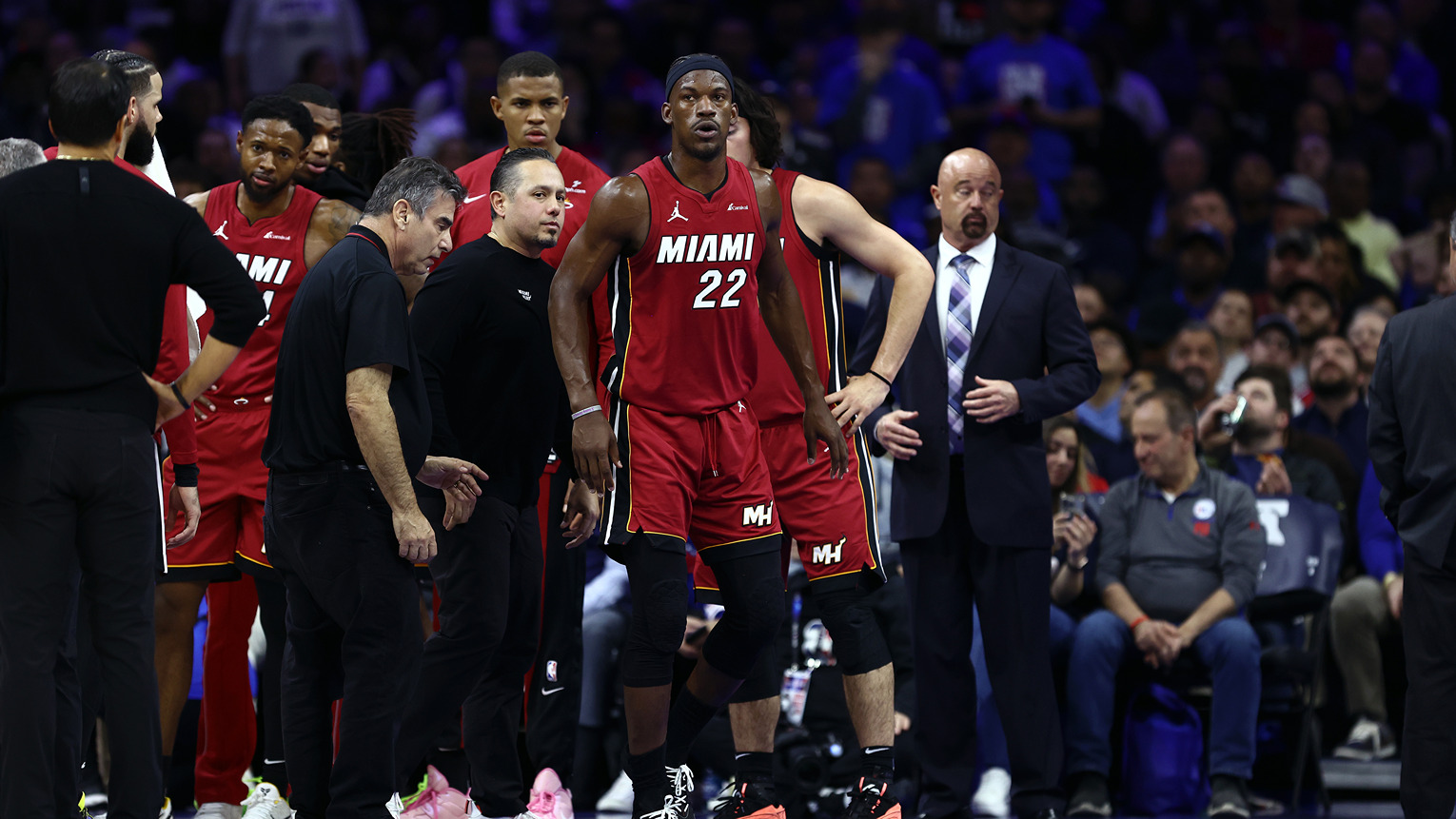The bar to clear was certainly not high, but the Sixers’ defense on Trae Young has been much improved since the first half of Game 1.
Young had 25 points on 8-for-13 shooting, seven assists and one turnover in the opener of the Sixers-Hawks second-round series. Since then, he’s scored 31 points on 9-for-26 shooting, dished out 14 assists and turned the ball over seven times.
How have the Sixers slowed him down? We suggest watching the video above for a look at how they've guarded Young in the Hawks’ double drag actions, then returning here for a few additional thoughts.
Stay in the game with the latest updates on your beloved Philadelphia sports teams! Sign up here for our All Access Daily newsletter.
In Game 1, Danny Green defended Young for over seven minutes, according to the NBA’s tracking data. He guarded him for just 25 seconds in Game 2. The worst element of Green’s individual Game 1 performance might have been how much he allowed Young to reject ball screens.
It sounded that way in Sixers head coach Doc Rivers’ assessment, anyway.
“It’s all body position,” Rivers said Monday. “Once the pick-and-roll coverage is called, you have to take your man to the pick. It’s just that simple. That’s not hard. We have to do that. If we’re going to give Trae the ability to go either way on pick-and-rolls, we’re in trouble. That’s discipline. We all know it; Danny knows it. It wasn’t just Danny. It happened to several guys, and so that can’t happen. That’s for sure.”
Ben Simmons and Matisse Thybulle were the two primary Game 2 defenders on Young, and both did well to deny potential ball screen rejections. Unless any major surprises are in store, Simmons and Thybulle should have the Young assignment for the reminder of the series.
NBA
The other main Game 2 adjustment by the Sixers was switching Tobias Harris onto Young when Atlanta involved him in double drag actions. As Rivers noted Monday, the Hawks’ double drags are typically “1-4-5,” and the “1-4 part has to take him out of the quick turn of the corner.”
“What Trae wants is to go downhill,” Rivers said, “and we felt like the switching would at least flatten him out. Even if he beat our guys, it would give us time to adjust and be in our help positions. In Game 1, he was just going downhill so quickly that we decided on the double drag — the first guy, not the second guy. And I thought that had some impact for us.”
Harris appreciated that he’s now a strong enough defender to be asked to handle a shifty guard like Young at times. He also explained that, to the Sixers, switching seemed preferable to throwing multiple defenders at Young. Blitzing him is a decent change-of-pace option but, given the three-point shooting and playmaking ability of players like Bogdan Bogdanovic and Kevin Huerter, likely not reliable as anything more than that.
“L.A. days, nah, (Rivers) definitely would not have trusted me with that,” Harris said with a laugh. “It was just an adjustment we made. We showed different flashes last game. In Game 1 we were out there trying to trap, blitz, and that was leading to them making shots.
“So we just wanted to show different bodies on him. Obviously we started Ben on him, and then we had different guys rotating. He’s a dynamic player, uses his body well, so it’s tough to really get as physical as you want when you’re guarding him. But I thought we did a good job tonight of just standing our ground and having him shoot and make tough shots.”
Switching the first screen in the double drag action doesn’t automatically stop Young in his tracks. The Sixers still need to guard against him pausing for a second, then attacking what is essentially a 4-5 pick-and-roll with the Sixers’ big man in drop coverage. If Young figures out how to consistently penetrate into the paint against that look, more tweaks might be required.
Of course, the Sixers aren’t the only team that could change things up. For the Hawks, it wouldn’t be surprising if targeting Seth Curry became a greater focus.
Curry has been hedging and recovering on ball screens. Ideally, he’ll force the ball handler to pause, get back to his man and prevent the offense from establishing any advantage. In practice, it doesn’t always work that way. Atlanta has put the Sixers in bad positions a few times when Curry couldn't recover quickly enough.
Especially if he’s guarding an offensive threat like Huerter, that’s a good option for the Hawks, even if Curry is a savvy defender. And, whenever there’s a cross-match in transition with the 6-foot-2 Curry defending a bigger player, Atlanta would be wise to go at him immediately.
That’s one possible idea, but it will be interesting to see what exactly Hawks interim coach Nate McMillan does differently as the series shifts to Atlanta.


